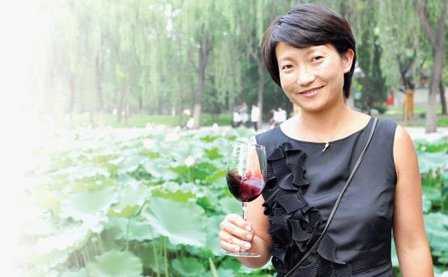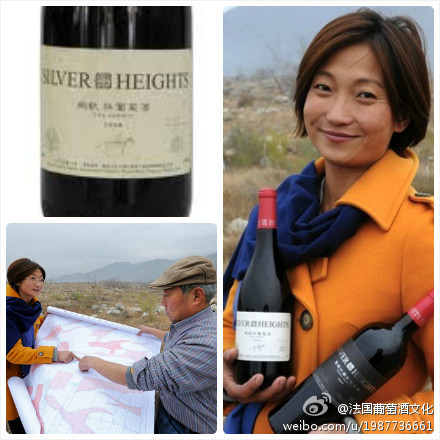By Jim Boyce
Emma Gao is the winemaker at Silver Heights, a family-owned operation that she runs with her father and sister in Ningxia and that has gained a reputation for making some of China’s best wines since the first vintage in 2007. The Chinese edition of La Revue du Vin de France recently named Gao — who has a Diplôme National d’Oenologue from Bordeaux — the country’s winemaker of the year. Her flagship wines The Summit and Family Reserve are distributed by Torres China.
~
Which grape varieties do you use? How many bottles do you make a year?
We use Cabernet Sauvignon, Cabernet Gernischt and Cabernet Franc. For 2011, we made enough for 40,000 bottles, which will be used for our top labels — The Summit and Family Reserve — and our entry-level wine. We change the blends each year. For example, in 2010 we used a fifty-fifty blend of Cabernet Sauvignon and Cabernet Gernischt for our 6,000 bottles of The Summit.
Your first vintage was 2007. What was your biggest lesson from that year?
I was worried about volatile acidity and very much relied on sulfur dioxide (SO2). The SO2 hampered the color and fruitiness of the wine. Since then, I add as little as possible and the results are much better.
After four vintages, which one is your favorite, and why?
The 2008 was better than the 2007, and the 2009 was better than the 2008, so that was encouraging. But the best I think is the 2011, because I am focusing less on manipulating the grapes and more on revealing their nature.
Your family planted a new vineyard in Ningxia. What is happening with that?
After trying to make wine by sourcing grapes from different places with different soils in Ningxia, we found that the best grapes are growing in stony areas. My father found an area dominated by clay and mica about 30 kilometers from Yinchuan, near the famous Helan Mountain rock paintings. He planted the vines this spring and we are looking for this vineyard to start showing its potential in five years or so.
What advice would you give to a foreign winemaker who comes to work in Ningxia?
Do not simply use the same viticulture methods as in other places. For example, because of the climatic conditions, viticulture in Ningxia is very different from many parts of Europe.
Many outside of China are unfamiliar with the grape name Cabernet Gernischt.This grape has been identified as everything from Cabernet France to an unknown cross to Carmenere. Can you tell us more about it?
This variety usually exhibits some green pepper features when used in the rest of China. In Ningxia, it gives some tomato leaf and somewhat rose-like aromas. Because it lacks acidity, is is best for blending.
We had an Italian winemaker from Antinori visit and he said this grape is Carmenere for sure. When he looked at the vines and tasted the wine, he said he found the same features in Italy, where the climate makes ripening difficult for this variety. My father manages our vineyard and always tries his best in the field, so we luckily have the best Cabernet Gernischt in the stony areas of Ningxia.
Grape Wall has no sponsors of advertisers: if you find the content and projects like World Marselan Day worthwhile, please help cover the costs via PayPal, WeChat or Alipay.
Sign up for the free Grape Wall newsletter here. Follow Grape Wall on LinkedIn, Instagram, Facebook and Twitter. And contact Grape Wall via grapewallofchina (at) gmail.com.



Leave a Reply
You must be logged in to post a comment.